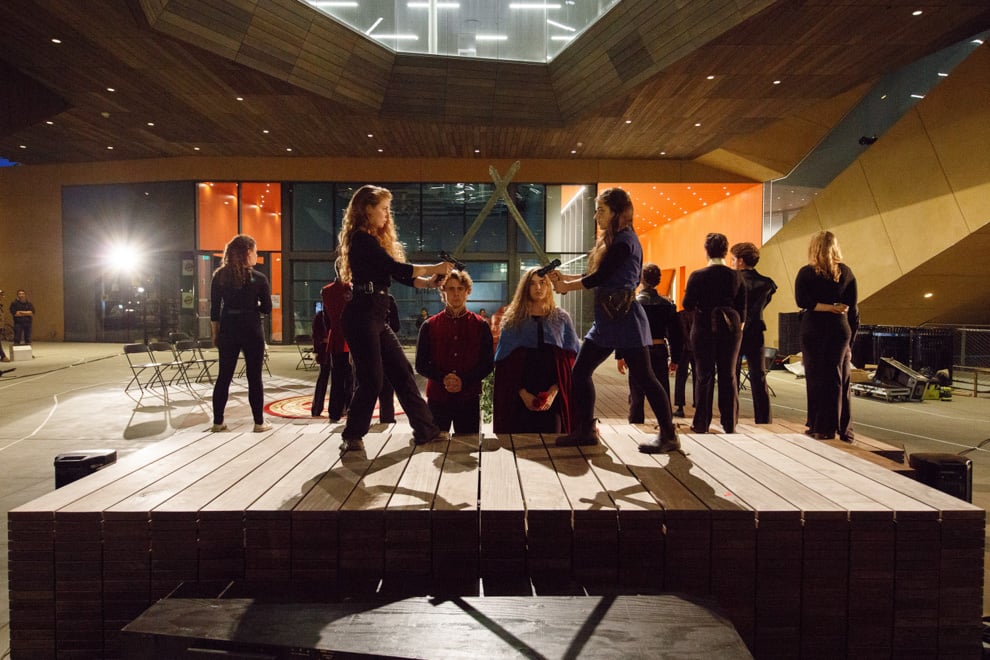Putting Shakespeare’s first four known plays into a single work is not an small undertaking. The task of performing all four in under three hours sounds near impossible – unless you’re the Stanford Shakespeare Company, that is. Performed by a stellar cast with impressive cohesion, “Wars of the Roses” (the term used to describe the 15th-century dynastic wars for the English throne) melds “Henry VI” parts one through three and “Richard III” together with ease. As is to be expected of any adaptation, especially one of this mass, there are some moments of confusion. Overall, however, “Wars of the Roses” is a surprisingly successful feat.
Staged within the new McMurtry building, the seemingly unconventional modern location includes factors I imagine affected Shakespeare’s Globe: an outdoor setting (jacket recommended), utilization of actor-audience interactions and amazing acoustics, thanks to a confined yet reverberant space. As the sun sets, the natural shifting light reflects the consistently darkening theme of the show. The use of the building’s balconies, staircases, and sculptures by directors Adison Chang and Josh Petersen, both ‘18, creates beautiful, multi-dimensional stage images. Background noises of cars and passersby, while at times distracting, do little to affect the performance of the company.
The acting is some of the best I have seen on campus this year. The large cast of characters allows each performer to be highlighted, spotlights truly well-deserved by all. Among these, Louis McWilliams ’16 gives a stand out performance as the Duke of Gloucester/King Richard III. His commitment to physicality is commendable – he never once stretches out of his hunched back, unsteady legs or ominous low voice. He keeps the audience on their toes as his relationships with other people are always suspenseful and on-edge.
In addition, cross-gender casting provides a number of opportunities for the women of the company to play badass roles, and they knock them out of the park. Emma Rothenberg ‘19’s thunderous voice was only one element of her vicious commitment as revenge-thirsty John Talbot. A moment shared between Talbot and his son, played by Alexi Stein ‘19, is memorable and heartbreaking. Not to mention Heather Connelly ’18, who commands attention onstage as a fierce Richard Plantagenet with strong stances and an unwavering voice. Fiona Maguire ‘19, as Queen Margaret of Anjou, develops a regal nature in her steady, upright walk and her reactions to other characters are sincere, beautiful and haunting.
The structure of the adaptation itself is also well done. Intriguing in the first act, the pieces from each show come together in the exposition to reveal understandable circumstances and relationships. The second act drags on in the beginning, with a few underdeveloped characters and untied ends.
As such, it becomes rather evident that this is a condensed version of four separate, full-length plays, and the extended performance time – at least two and a half hours – could probably have been condensed further. As the tragic themes of the shows unwind, however, the second act brings the four dramas to a hopeful ending.
“Wars of the Roses” provides a wonderful introduction to four remarkable, classic works. Masterful sword fighting, compelling characters by a talented cast and a well-utilized performance space are just a few of the elements that make “Wars of the Roses” an extraordinary world-premiere performance.
Contact Bella Wilcox at [email protected].
